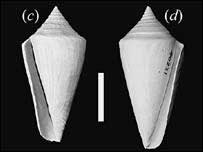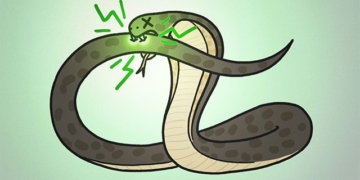 |
| Left-coiled snails (left side) appear to have a greater survival advantage compared to right-coiled snails, as crabs cannot reach in to catch them. (Image: BBC) |
Snails with shells coiled to the left enjoy significant survival advantages, as predators find it difficult to prey on them.
This conclusion was published by American scientists in the journal Biology Letters of the Royal Society. To distinguish between left-coiled and right-coiled shells, hold the shell in your hand with the pointed end facing forward and the opening facing you. If the opening faces the right, it is a right-coiled shell; conversely, if the opening faces the left, it is a left-coiled shell.
Scientists examined the shells of marine snails (species with shells similar to those of terrestrial snails) and cone snails, which are prey for the crab Calappa flammea. They discovered that crabs cannot open shells that twist to the left because they only have one tool to pop the lid located on their right claw, so they tend to avoid these snails.
“Crabs have a special tool on their claw, which is used like a can opener. So, imagine using a can opener for a right-handed person with the left hand – you would find it quite challenging to do that“, said Gregory Dietl from Yale University.
 |
Crab Calappa flammea |
Dietl and his colleagues studied 11 pairs of left-coiled and right-coiled snail shells that date back 1.5 to 2.5 million years, alongside existing species.
10 out of 11 pairs showed more scars on the right-coiled shells, indicating that crabs attacked them more frequently than their left-coiled counterparts.
Typically, a crab will grasp a snail shell such that the pointed end is facing away from its body. For right-coiled shells, this means that opening the shell occurs on the right side, allowing the crab’s special tool to attack inward. However, with a left-coiled snail, the crab would either have to open the shell on the left side or grip the prey with the pointed end of the shell facing its body. Both options seem too complicated, and the crab would act like a vegetarian entering a butcher shop and simply walk away.
The evolutionary question here is why left-coiled snails remain so rare—some have even gone extinct—if this advantage helps them escape the claws of crabs more easily.
Perhaps if left-coiled marine snails became more common, crabs might evolve new body structures or hunting techniques, and the advantage of left-coiled snails would disappear.
T. An



















































